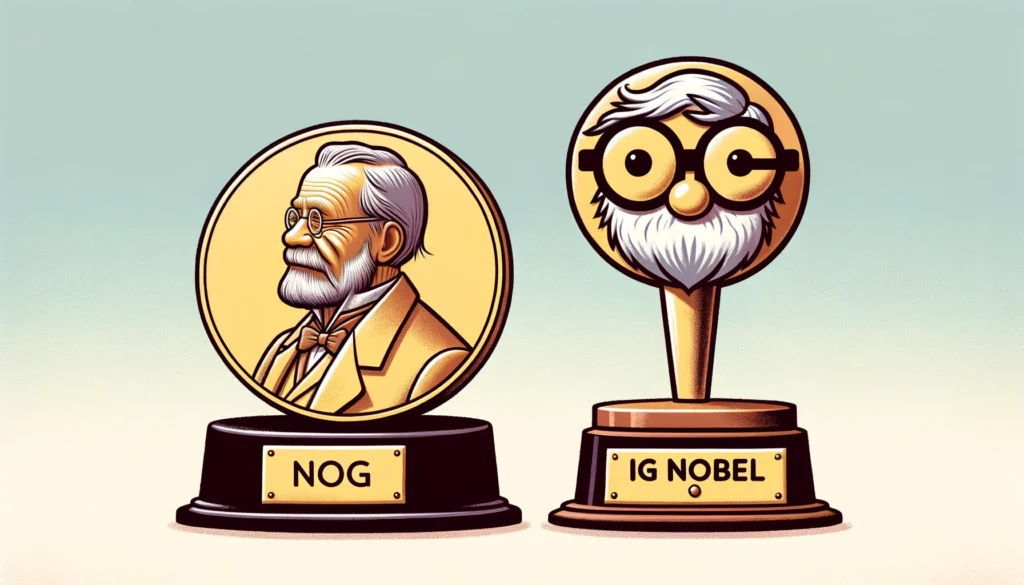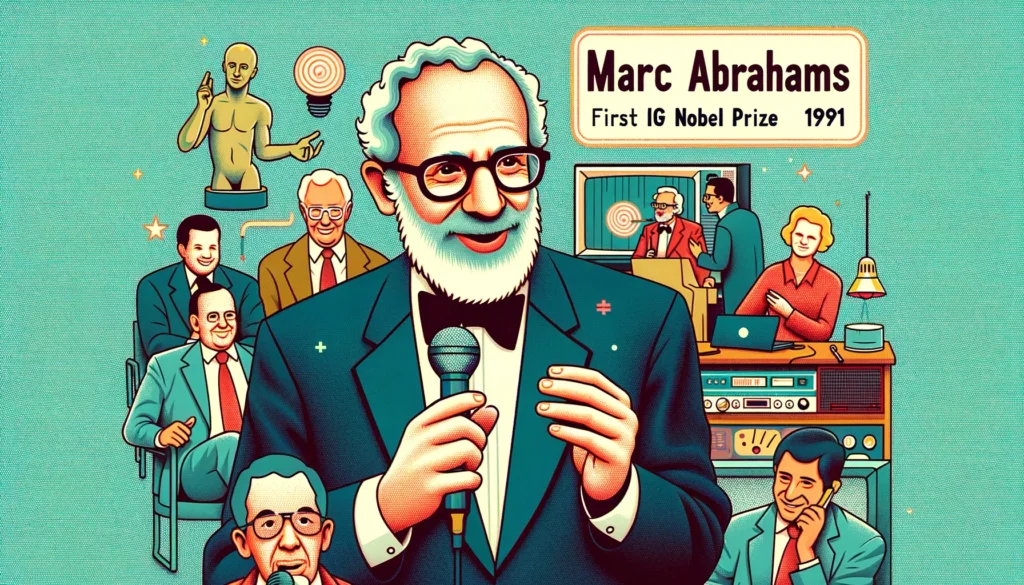In the grand theater of scientific achievement, the Ig Nobel Prizes play the role of the charming court jester. While the prestigious Nobel Prizes honor monumental breakthroughs that push the boundaries of human knowledge, the Ig Nobel Prizes focus on the quirky, the oddball, and the downright silly. Their mission? To first make people laugh, and then make them think. From research on why woodpeckers don’t get headaches to the universal question of “huh?”, the Ig Nobel Prizes celebrate the joy of curiosity in the most delightful manner imaginable.
History and Origins
Once upon a time, in the early 1990s, a group of merry scientists and humorists decided the world needed more laughter. Thus, the Ig Nobel Prizes were born, the brainchild of Marc Abrahams and the good folks at the Annals of Improbable Research. The prize was humorously named after Ignatius “Ig” Nobel, a distant (fictitious) cousin of the Nobel Prize founder Alfred Nobel. The first ceremony was held in 1991, aiming to honor achievements that “cannot or should not be reproduced.”

Initially met with puzzled looks and raised eyebrows, the Ig Nobels quickly captured the imagination of both the scientific community and the public. They became an annual tradition, proving that even the most trivial or bizarre research could spark joy and contemplation.
The Criteria for Winning an Ig Nobel Prize
So, what does it take to snag an Ig Nobel Prize? The secret recipe involves a hefty dose of imagination, a sprinkle of the absurd, and a pinch of genuine scientific inquiry. The key criterion is simple: the work must first make you laugh, then make you think.
Consider, for example, the study on why bananas are slippery. Spoiler: it’s all about the friction! Or the investigation into whether humans swim faster in syrup than in water. (They don’t, in case you’re wondering.) The selection process is equally whimsical, overseen by a diverse panel of real Nobel laureates and other distinguished figures who appreciate a good chuckle.
Notable Ig Nobel Prize Winners
Let’s dive into some of the most memorable—and giggle-worthy—Ig Nobel winners. Consider, for example, the groundbreaking research on the universal word “huh?”. Yes, you read that right. Researchers conducted a linguistic deep dive across multiple languages and found that “huh?” seems to be a global phenomenon. It turns out that when confusion strikes, humans everywhere have a remarkably similar way of expressing it. Huh!

Then there’s the discovery that cows with names produce more milk. The logic? A cow called Daisy feels more cherished and thus more productive. And who could forget the study proving that people make better decisions on a full bladder? Science truly knows no bounds when it comes to curiosity.
The Impact of the Ig Nobel Prizes
Beyond the laughs, the Ig Nobel Prizes serve a surprisingly profound purpose. They highlight the joy of discovery, showing that science isn’t just about serious faces and white lab coats. By bringing humor to the forefront, these awards make science accessible and entertaining, encouraging a broader audience to appreciate the wonders of research.
For some researchers, winning an Ig Nobel Prize has even been a career boost. It brings a certain charm to their résumés, proving that they’re not just brilliant but also have a sense of humor. It’s a testament to the idea that sometimes, the most trivial questions can lead to the most interesting conversations.
The Ceremony and Festivities
If you think the research is fun, wait until you hear about the Ig Nobel ceremony. Held annually at Harvard University, it’s a night filled with laughter, quirky traditions, and playful antics. One of the highlights is the paper airplane deluge, where attendees gleefully pelt the stage with paper planes.

Nobel laureates hand out the prizes, adding a touch of gravitas to the hilarity. And let’s not forget the “24/7 Lectures,” where experts have 24 seconds to explain their topic, followed by a 7-word summary. It’s a whirlwind of wit and wisdom that leaves everyone grinning.
The Underlying Message
Beneath the humor, the Ig Nobel Prizes carry a deeper message: embrace curiosity, think outside the box, and don’t be afraid to laugh at the absurd. They remind us that science is not just about grand discoveries but also about the joy of exploring the unknown, no matter how trivial it may seem.
By celebrating unconventional research, the Ig Nobels encourage scientists to look at the world from different angles and to find delight in every little question. It’s a reminder that the journey of discovery is often as important as the destination.
Conclusion
The Ig Nobel Prizes are a testament to the playful side of science. They show that while serious research is vital, there’s always room for a little laughter. So, the next time you ponder why some people have more belly button lint than others, remember: it’s these quirky questions that keep the spirit of curiosity alive.

In the end, the Ig Nobels teach us to celebrate the odd and unexpected. They make us laugh, make us think, and remind us that in the grand adventure of science, there’s always a place for a good joke.
Author’s Note
Writing about the Ig Nobel Prizes was an absolute delight. These awards remind us that science is not just about serious discoveries but also about the joy and curiosity that drive researchers to explore the world in all its quirky glory. I hope this blog brings a smile to your face and inspires you to look at science with a sense of wonder and humor.
G.C., Ecosociosphere contributor.
References and Further Reading
For those interested in diving deeper into the world of unusual and fascinating scientific research, here are some recommended books available on Amazon:





Comments
The Ig Noble Prizes – A very interesting blog describing a positive relationship between scientific research and laughter.